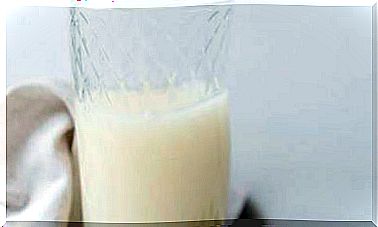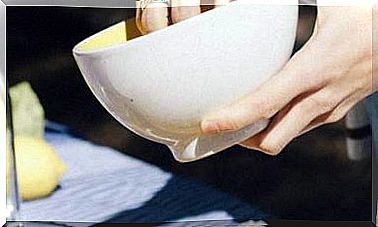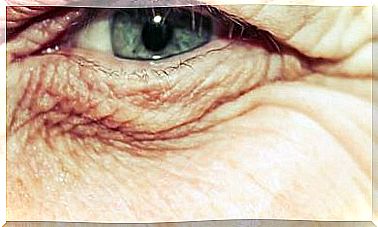Fascias, The Secret Of Flexibility
Fascia is the tissue that, like a network, surrounds bones, muscles and organs, connecting them together. Stretching it well is crucial in order not to lose flexibility and maintain good posture.

The fasciae or fascial system cover a vast extension of the body, compacting it, giving it shape, compartmentalizing it, and stabilizing and supporting all the organs. They play a crucial role in the body, but what exactly are they? How do they affect our body posture? Why do we have to deal with them?
What are fascias?
The fasciae are a whitish tissue that covers the rest of the tissues of our body: bones, muscles and organs. Their thickness and degree of density, strength and flexibility depend on their location and the mechanical requirements of the area they surround.
They are packed with sensory receptors (biological sensors) each connected to a nerve. The function of these receptors is to inform the central nervous system, among other things, about the mechanical stresses experienced by the tissue and, by extension, the stresses of the body.
What are they for?
- They transmit sensory information: Being endowed with all these receptors, the fascial system is the largest sensitive system in the body, ahead of the skin.
- They collaborate with the immune system: The fasciae are the main defensive tissue of the body, since through their interior, through an aqueous and whitish fluid called “fundamental substance”, lymphocytes and macrophages (both defensive cells) travel to go wherever they are necessary to keep bacteria and viruses at bay.
- They transport toxins and nutrients: Through this fluid, other substances also pass through. On the one hand, the toxins that must be evacuated by the lymphatic system. On the other, the nutrients that feed the cells and that come from the blood vessels.
- They keep the organs in place: The complex fascial system also plays an important role in body mechanics. In fact, we could say that we have a single fascia, which extends throughout the body, enveloping internal organs and structures. At the same time, the stomach, the liver, the kidneys, the blood vessels, the muscles … have their own fascial sheath. These fascial covers help maintain the structure of the organs. But they also expand in different directions to anchor them to the bone system and adjacent organs and structures.
- They support the skeleton: That same fascia surrounds the bones (periosteum), at the ends of which it densifies, forming ligaments. There are authors (like Serge Paoletti) who even consider bone as an extreme specialization of the fascia, in which its tissue has incorporated osteocytes and minerals to increase density and hardness.
- They support and make the spine flexible: In the spinal column the fascia is literally covering it. It keeps the vertebrae cohesive and gives you flexibility to carry out everyday movements.
- They protect the nervous system: From the spine, it continues to expand to form the meninges, that is, the specialized fascial tissue that covers and protects the central nervous system (brain, cerebellum and spinal cord).
- They keep us upright: Last but not least, the fascia “pack” the muscles and connect them together, literally establishing tension lines or bands that serve to keep the body in a certain posture and to optimize movements. As we will see below, daily posture affects these lines of tension.
Therefore, it is important to keep the fascial tissue well hydrated and elastic. The fascias need some minimum conditions to be able to perform their function in the best way.
Why do they become stiff?
Muscles often work in groups of myofascial chains (“mine” means “muscle”) in order to keep the body upright. On these chains there are several factors that can influence increasing tension and reducing flexibility.
- When there is not good posture and the body is misaligned, a chain may work more than its fair share. That makes that chain tighten and shorten. That tension and that shortening affect, in turn, the chains with which it is related.
- On the other hand, there are pathological processes that can easily alter the biomechanics of the organism and spread through the myofascial chains. For example, a poorly healed sprain can lead to mechanical dysfunctions in the knee, hip, and even the spine. Or a scar can trigger a tension that pulls adjacent structures, as occurs when pinching a spider web: if one of its ends is grasped, the entire system deforms.
- The prolonged stress or food intolerances may also harden and also dehydrate the fascial tissue.
When the fascial tissue hardens and becomes dehydrated , its ability to both provide nutrients to the cells in the affected area and to evacuate metabolites (toxins) from these same cells is reduced.
This densification of tissue also reduces joint flexibility and range of motion.
How does stress affect fascial tissue?
The fascial tissue responds to emotional influences. Stress affects you because it affects the posture and, therefore, the flexibility of the fasciae.
It is known that one of the areas in which stress is somatized is the belly. Who has not felt pressure and discomfort in the pit of the stomach in the face of an anguishing, sad or threatening situation?
There are multiple physical reactions to stress, for example an increase in tone of the sphincters of the intestinal tract, such as the pylorus (the valve at the end of the stomach), or of the intestinal muscles that displace the fecal bolus.
Many of the tensions that are usually experienced in the abdomen go unnoticed, but abdominal tensions affect the skeletal structure and condition it:
- There is a downward traction that, through the viscero-fascial chains, is transmitted from the intra-abdominal organs to the diaphragm.
- From the diaphragm it is transmitted to the pericardium
- Traction from the pericardium reaches the thoracic and cervical vertebrae.
- The result is an internal tension that makes us hunch our backs, to adopt what is known as a “hyperkyphotic posture.”
Psychotherapy and spiritual work can help transform the way we deal with stress. Recognizing the sources that lead us to it is essential to improve both mental attitude to life and physical posture.
How to make the fascia more flexible: postural reeducation and stretching
It is important to have a physiotherapist, osteopath or expert in the Mézières, RPG or Rolfing method to detect the nuclei of tension and reduce their mechanical conditioning. The goal is for the body to be able to express itself physically freely.
Postural reeducation is also essential in daily life (in front of the computer, in the car, on the sofa, when walking, etc.) and to perform moderate physical exercise regularly.
Stretching the muscles is essential. Muscles tend to shorten and contract; by stretching them regularly, it is possible to keep the myofascial joint free.
Traditional stretches affect the elastification of the myofascial system. However, specific practices can be introduced to more effectively stretch certain fascial regions, such as visceral fasciae or body surface fasciae. Specifically:
- To better stretch the fasciae on the body surface, during stretching you can gently but firmly pull the skin with the palms of your hands.
- It can also help to accompany the movement with breathing, performing an apnea for 3-5 seconds at the end of the respiratory time.
Depending on the area of the body, it may be more interesting to emphasize inhalation (for the anterior and posterior region of the trunk) or exhalation (anterior and lateral region of the neck). Regarding visceral fascias:
- The abdominal visceral fascias gain flexibility with a sustained spinal extension exercise combined with exhalation and apnea.
- The intrathoracic visceral fascias gain flexibility with breathing and apnea.
The key is not so much the intensity of the stretches as holding the stretch for a minute or more. If the myofascial tissue is forced, it tends to maintain its stiffness to protect itself from possible injury, making it more difficult to spread.
These exercises can also help you maintain more flexibility in your fascias.









